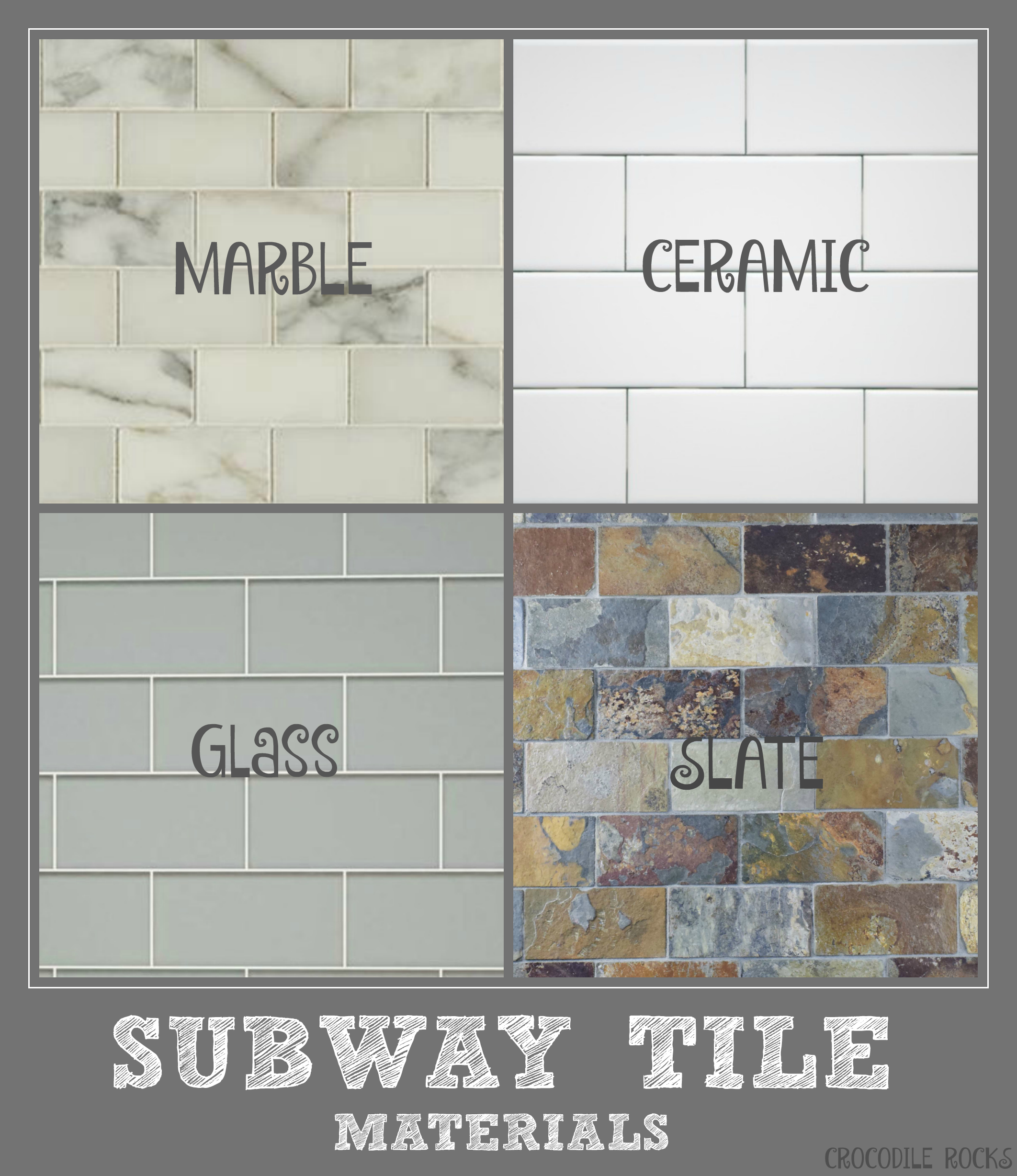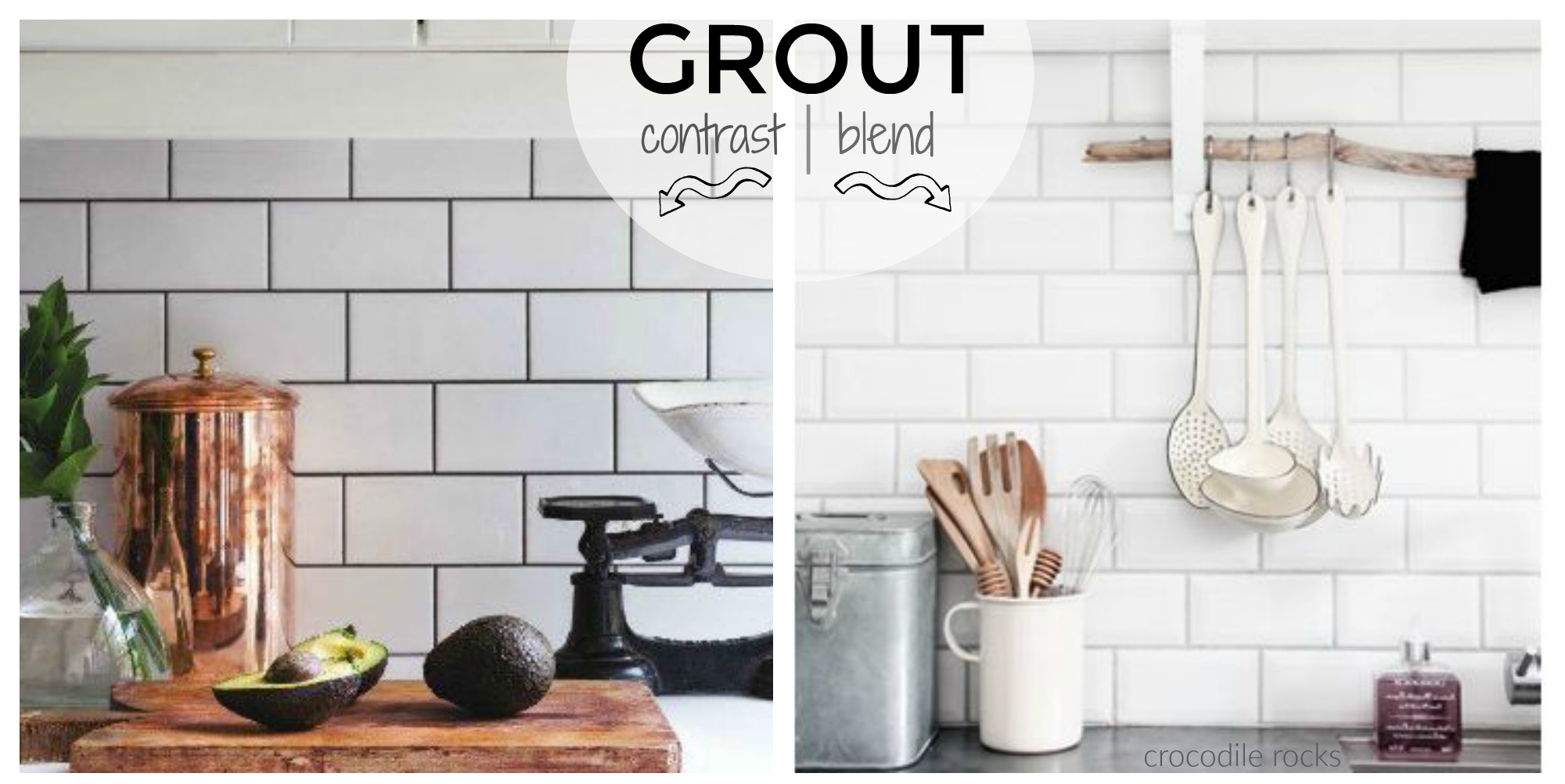

What material would you like it to be. Most commonly used is ceramic/porcelain, but you can also choose glass or natural stone: slate/marble/travertine. You also have to decide what finish would you like. There is matte, polished, tumbled or crackled. You also have the option to choose the edges, whether you’d want it to be smooth and clean cut, or beveled and kind of protrude. Of course you then have to choose the color. White is the most popular, but if you have a white countertop, grey looks nice. This is where you can have fun, by choosing any color in the rainbow: blue, green, red, yellow etc. However, I would say the mistake a lot of people make is going all out on a trendy backsplash and not realizing that it can really “date” your kitchen. So my suggestion would be to keep it simple and choose something timeless and somewhat neutral. Next you’ll want to consider what color your grout will be. You can accentuate the pattern by choosing a contrasting color, black or grey grout with white subway tile. Or you can go for a clean, minimalist look, by going for a grout that is the same color as your tile. If you have a busy countertop, I would go for a clean/quiet look. But if you have a simple/plain countertop, then go for a more patterned geometric grout. Another thing to think about is the pattern itself. There are all sorts of designs you can do with standard subway tile. We’re used to seeing it set in a brick pattern or half bond, which is the most classic look. But you can also install it stacked horizontally or vertically. This of course would add more of a contemporary/modern flair. A few other options to consider is how high to go up the wall with the tile. You can choose to go up to the bottom up the cabinets, or go all the way up to the ceiling. Something that most people don’t think about is how to terminate where the tile ends on exposed areas. You can add a border pencil, or nothing at all. Some choose not to add backsplash on side/return walls and just do the actual “back” of the counters.
